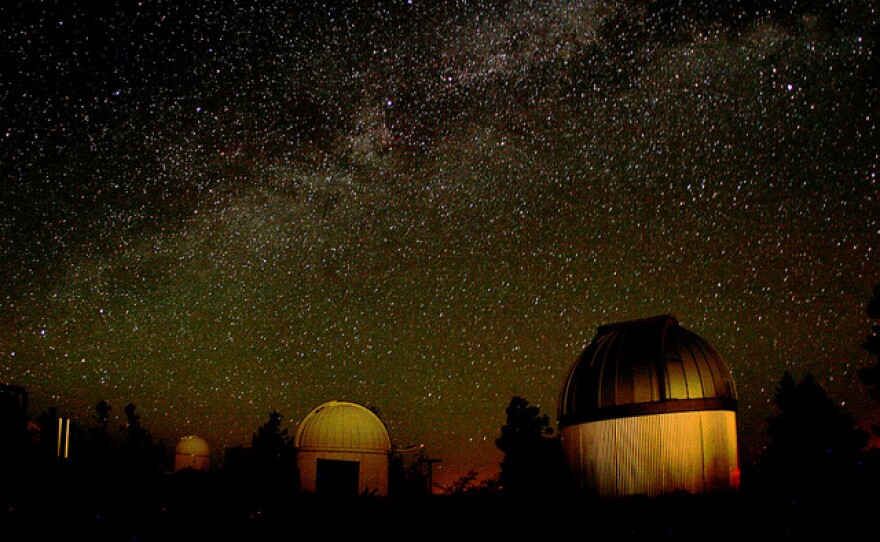When was the last time you were someplace so dark that you could look up at the night sky and actually see the stars? Not just a handful, but hundreds or thousands?
“The Milky Way when it rises here looks like a thunderstorm coming toward you. And you think, oh my god, it’s going to cloud over and it’s not, it’s the Milky Way rising, it’s the edge of our galaxy coming up.”
That’s a scene from a new documentary. It’s called The City Darkand it airs on PBS stations starting tonight (check your local listings).
The film takes a look at our love affair with artificial light – and why humans and wildlife need the night sky. Ian Cheney directed and produced The City Dark and we spoke with him for today's Environment Report. Cheney grew up in rural Maine but has been working in New York City. I asked him why he wanted to make this film.
Ian Cheney: Well, when I moved to New York City, one of the first things I realized was that I was missing the night sky, and that launched me on a journey to explore this broader topic of light pollution and how artificial light affects our world.
RW: So what do you think we lose when we’re in cities or suburbs with bright street lights when we can’t see the sky?
Ian Cheney: Well, it probably varies person by person, but a lot of the things I came to feel and a lot of the things I heard from the people I interviewed involved a loss of a sense of perspective, a sense of place in the universe, a sense of connection to the cosmos, the stars beyond the everyday world in which we live that provides all sorts of inspiration.
RW: I have to tell you - your photography of the night sky in this film is so beautiful. What kind of challenges did you have shooting the footage?
Ian Cheney: Well, the word photography, of course, means writing with light. So the idea of making a film in the dark was challenging from the beginning, especially on a budget with small cameras. So we used a lot of time lapse photography in the film, using regular SLR still cameras, not video cameras, to shoot still images of the night sky in sequence. We would shoot hundreds of images of stars over the course of the night, then string them together in time lapse imagery so you can watch the stars rise up over a mountain, or in many cases, watch city lights twinkle throughout the night as a few stars pop up as best they can.
Michigan has one of only six International Dark Sky Parks in the country. That’s a designation for a place with an exceptional view of the night sky. Ours is The Headlands, in the northwest Lower Peninsula about two miles west of Mackinaw City.








